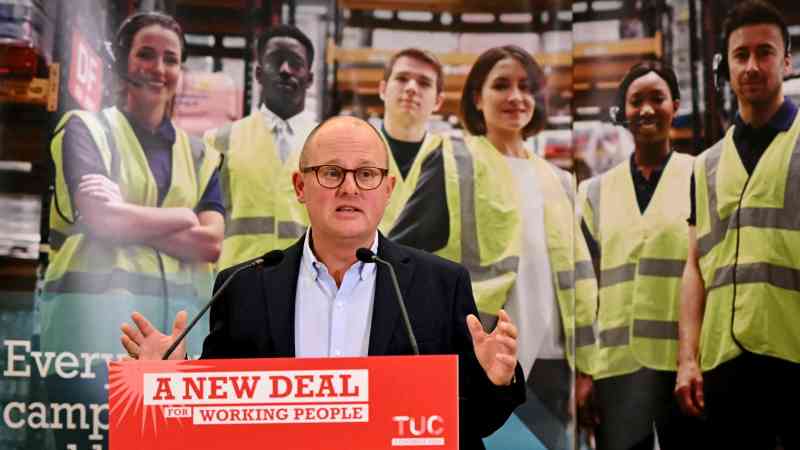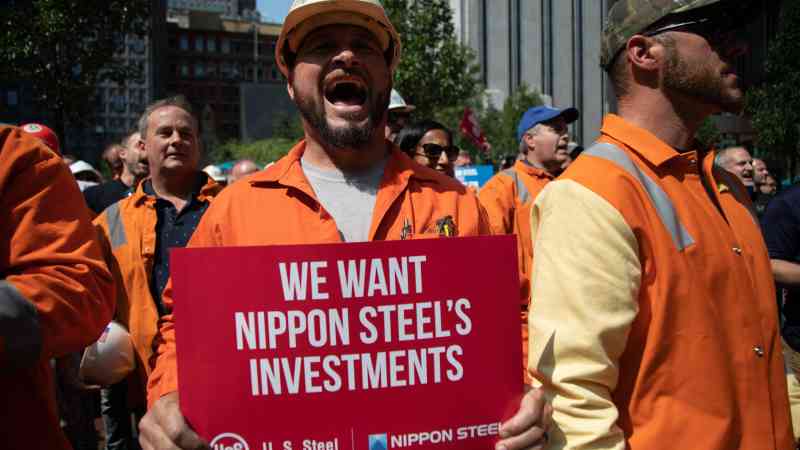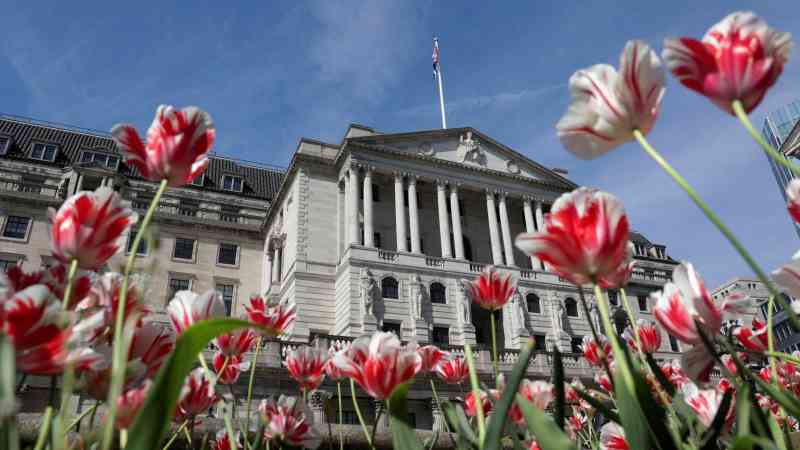Business needs sweeteners, or growth will stay stagnant
It is a conundrum. Growth news since Labour won the general election nine weeks ago has been pretty good, and continues, but readings from the public finances continue to be troubling. That you can have a reasonable run of growth, but a very poor fiscal inheritance, is unusual.
True, there have been periods before when economic growth has been revenue-poor, and there were special circumstances this time, including the previous government’s determination to throw in some pre-election tax cuts alongside unrealistic future spending numbers. Not only that, but growth has only recently restarted.
The latest growth evidence came from purchasing managers’ indices (PMIs). They showed UK manufacturing at its strongest for 26 months, and service sector activity at its best since April. Combining these into the composite PMI suggested that gross domestic product (GDP) growth this quarter should be 0.4 per cent or so, slightly slower than in the first half of the year but not bad.
Part of the conundrum may be resolved when the independent Office for Budget Responsibility (OBR) delivers its first assessment to the Treasury on September 19, in the build-up to the October 30 budget.
The OBR will raise its growth forecast for this year. If in line with the consensus, it would revise up the 0.8 per cent it predicted in March to 1.1 per cent. The challenge will come next year and beyond. The OBR’s 2025 forecast was for 1.9 per cent growth, above the 1.4 per cent consensus.
That new forecast is important. Over time, stronger growth improves the public finances. Sir Keir Starmer has pledged to make the UK the strongest-growing economy in the G7 (America, Japan, Germany, France, Italy, Canada and the UK), with sustained growth of 2.5 per cent a year.
The Tories claim to have already delivered the fastest-growing economy in the G7, based on its performance in the first half of the year, but that is a flash in the pan. It is a bit like me walking a marathon in eight hours and, because of a sprint in the last 100 yards, claiming to be the world’s fastest distance runner.
The last OBR forecast did not get to 2.5 per cent, but was quite upbeat, with annual growth predictions from next year of 1.9, 2, 1.8 and 1.7 per cent — the latter for 2028 — respectively.
The government will want to avoid a growth downgrade, but the OBR is highly unlikely to endorse its 2.5 per cent ambition. The fiscal watchdog’s last forecast suggested that there should be a partial rescue from what has so far been an appalling decade for per capita GDP growth. It predicted annual average growth on this measure of 1.3 per cent over the 2025-28 period, which compares with just 0.3 per cent since the start of 2020 and 0.7 per cent between 2016 and 2024. The growth in UK GDP per capita since just before the global financial crisis is near the bottom of the G7 league table.
Per capita GDP figures are the clearest indication yet of the UK’s economic slowdown amid productivity stagnation, economic shocks and Brexit. Getting back to the pre-2016 average of 1.8 per cent a year per capita GDP growth, let alone the 2.5 to 2.8 per cent averages of the 1960s, 1970s and 1980s, looks a very tall order.
There are plenty of ideas for boosting growth. A report just published by Nesta, “the UK’s innovation agency for social good”, has more or less that title: “Economic growth and productivity: the ideas”. It is worth looking at, with the report acknowledging that it was put together with the help and contributions of Lord (Gus) O’Donnell, former Treasury permanent secretary and cabinet secretary, and Dame Kate Barker, a former member of the Bank of England’s monetary policy committee, who wrote an important report on housing for the last Labour government.
Among others acknowledged by the report, interestingly, are John Van Reenen and Anna Valero of the London School of Economics, both members of the new chancellor’s council of economic advisers, with Van Reenen the chairman.
The nine ideas in the report are quite solid. The first is to establish an independent growth commission to advise on policies for permanently boosting the UK’s potential. This is particularly pertinent now, when the danger is that growth will be sacrificed on the altar of fiscal rectitude.
The boldest proposal, though not new, is to replace existing property taxes, including council tax and stamp duty, with a land value tax. This would be based, as its name suggests, on the value of land, and was also recently recommended by the veteran economist Charles Goodhart. It would be a major tax reform.
Other ideas include empowering the economies of different parts of England by providing regional and local governments with a route to devolution and independent fiscal powers, and tackling the housing crisis by moving to a zone-led planning system that simplifies the rules for developers. Labour market inactivity could be addressed by harnessing artificial intelligence (AI) to match individuals with suitable opportunities, while other labour market reforms could be used to improve job quality.
The report also recommends the creation of ultra-low-cost energy zones to support industry. And, for perhaps the UK’s most pressing problem, it suggests a productivity innovation fund to test and understand the most effective interventions in this area — a kind of productivity laboratory.
As always, there are no silver bullets, but the potential for incremental improvement. In the end, though, reversing the UK’s growth decline may require a more fundamental reset.
That real GDP per head has risen by only 5 per cent over the past 16 years, after going up by 46 per cent over the previous 16, tells us something. Either that there is scope for a rapid catch-up, or the economy is unlikely to be very responsive, whatever you throw at it, because slow growth is ingrained.
In the end, governments can try to pull a lot of levers to generate stronger economic growth, and introduce institutional and tax reforms — but if businesses do not bite on them and unleash those famous “animal spirits”, it may come to nothing.
A case in point is business investment. It failed to respond when the Tories cut corporation tax, with the aim of the lowest rate in the G20. That policy has been replaced with a higher rate of tax alongside more generous tax allowances — the “full expensing” of qualifying investments. That is a recent policy but has yet to generate much of a response either. You can lead a horse to water …
PS
In writing last week about taxes that Rachel Reeves might turn to in her October 30 budget, I mentioned capital gains tax (CGT) and admit I initially got something wrong, until sharp-eyed readers pointed it out and it was fixed online. The source was HM Revenue & Customs’ tax ready reckoner, which I read as showing that a ten-percentage point increase in higher rates of CGT would raise a modest £2 billion a year.
In fact, as a colleague correctly wrote, the ready reckoner says it would cost £2 billion a year. Is this a rare example of the Laffer curve — raise tax rates and you reduce revenues? The ready reckoner implies that it is a question of scale: raise higher CGT rates by one percentage point and you increase revenue by £110 million a year; do so too much and you will reduce revenue because “very large tax-rate rises can reduce exchequer yield due to taxpayer behavioural impacts”.
Interesting, but perhaps my misreading may not have been that far wrong. Economists at the Institute for Fiscal Studies (IFS), currently writing a chapter on capital taxes for the IFS’s green budget early next month, are sceptical about the ready-reckoner estimates and think raising CGT rates would generate additional revenue in the medium term.
But, according to Stuart Adam, an IFS expert in this area, there may be more effective ways of raising revenue from CGT — for example, by targeting business asset disposal relief, the old entrepreneurs’ relief, and other reliefs. The ready reckoner agrees here, suggesting that increasing the business asset disposal relief rate by five percentage points from its current 10 per cent would generate £510 million a year, with a ten-point rise worth £710 million. Again, that’s not huge, though not only would it raise revenue, but would also make a general increase in rates a more effective revenue-raiser.
We shall see. One thing everybody who looks at this tax can agree on is that it needs reform and that it should not be used as a cash cow (which it never will be) without regard for investment incentives. The recent bout of high inflation has strengthened the case for reintroducing indexation relief, so that people are not being taxed on gains that purely reflect inflation.






